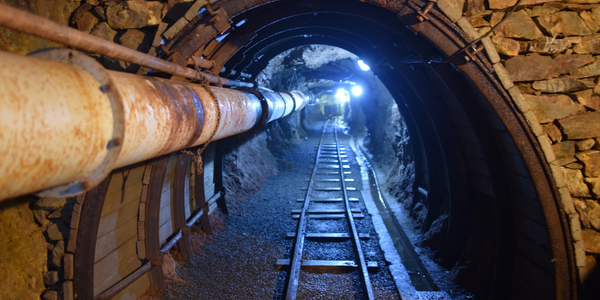Technology Category
- Infrastructure as a Service (IaaS) - Public Cloud
- Networks & Connectivity - Gateways
Applicable Industries
- Mining
- National Security & Defense
Use Cases
- Cybersecurity
- Tamper Detection
Services
- Cloud Planning, Design & Implementation Services
About The Customer
Sandvik Group is a global high-tech and engineering company with a strong commitment to enhancing customer productivity, profitability, and sustainability. Founded in 1862, Sandvik holds approximately 6,000 active patents in industrial tools and tooling, mining and construction equipment, and advanced stainless steel and special alloys. The company is a world leader in Manufacturing and Machining, Mining and Rock, Rock Processing, and Materials Technology. With 37,000 employees at nearly 600 sites in 140 countries, Sandvik is a significant player in the industrial engineering industry.
The Challenge
Sandvik Group, a global high-tech and engineering company, was facing significant challenges with its traditional virtual private network (VPN) approach to connecting and securing remote workers. The VPN technology was causing productivity and user experience hurdles, as it hadn't evolved much since its introduction. The company was looking for a technology that removed connectivity hurdles and reduced attack surfaces to improve its security posture. The challenge was further intensified by the COVID-19 pandemic, which necessitated a rapid transition to a work-from-anywhere (WFA) model. The company needed to establish zero-trust network access rapidly and smoothly to enable this transformation.
The Solution
Sandvik Group turned to Zscaler, a company they had previously partnered with, to implement a zero trust strategy. They conducted a proof of value with Zscaler Private Access (ZPA), a cloud-driven solution that addressed their VPN concerns. The ZPA was tested with 30 users and was launched globally five days later, enabling all employees to work safely during the pandemic. The ZPA solution provided seamless, secure, VPN-free access for private applications running on public clouds and within Sandvik's data center. By adding ZPA to its existing deployment of Zscaler Internet Access (ZIA), Sandvik established a holistic WFA zero trust security environment called the Zscaler Zero Trust Exchange platform. The ZPA solution also ensured that neither networks nor applications were ever exposed to the internet, making all of Sandvik’s infrastructure completely invisible to unauthorized users, while still granting authorized users least-privileged access.
Operational Impact
Quantitative Benefit

Case Study missing?
Start adding your own!
Register with your work email and create a new case study profile for your business.
Related Case Studies.

Case Study
Underground Mining Safety
The goal was to produce a safety system to monitor and support underground mining operations; existing systems were either too simple (i.e. phone line) or overly complex and expensive, inhibiting deployment, and providing little-to-no support in event of an accident. Given the dangerous nature of the mining work environment and the strict regulations placed on the industry, the solution would have to comply with Mine Safety and Health Administration (MSHA) regulations. Yet the product needed to allow for simple deployment to truly be a groundbreaking solution - increasing miner safety and changing daily operations for the better.

Case Study
Mining Firm Quadruples Production, with Internet of Everything
Dundee Precious Metal’s flagship mine, in Chelopech, Bulgaria, produces a gold, copper, and silver concentrate set a goal to increase production by 30%. Dundee wanted to increase production quality and output without increasing headcount and resources, improve miner safety, and minimize cost.

Case Study
Fastenal Builds the Future of Manufacturing with MachineMetrics
Fastenal's objective was to better understand their machine downtime, utilization, quality issues, and to embrace cutting-edge manufacturing technology/process improvement capabilities to bring their team to the next level. However, there was a lack of real-time data, visualization, and actionable insights made this transition impossible.

Case Study
Joy Mining Systems
Joy equipment faces many challenges. The first is machine integration and control. The business end of the machine has a rapidly-spinning cylinder with 6-inch diamond-studded cutting teeth. It chews through rock at rates measured in tens of tons per minute. The system grinds through the rock in front, creating a rectangular mine tunnel. Hydraulic lifters support the ceiling as the machine moves forward. Automated drills and screws drive 3-ft long screws into the ceiling to stabilize it. The rock and coal fall into a set of gathering "fingers" below the cutting cylinder. These fingers scoop up the rock and coal and deposit it onto a conveyor belt. The conveyor passes under the machine and out the back. A train of conveyor belt cars, up to a mile long, follows the cutter into the mine. The rock shoots along this train at over 400 feet per minute until it empties into rail cars at the end. Current systems place an operator cage next to the cutter. Choking dust (potentially explosive), the risk of collapse and the proximity of metal and rock mayhem make the operator cage a hazardous location.

Case Study
Data Capture for Afghanistan Forces
Electronic equipments on the field of Afghanistan provided information on the status of the vehicle and to identify potential threats surrounding it to the British Force. The monitoring and interpretation of this data requires robust and sophisticated digitization for data capture and communication.




